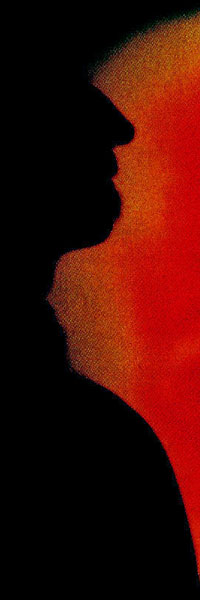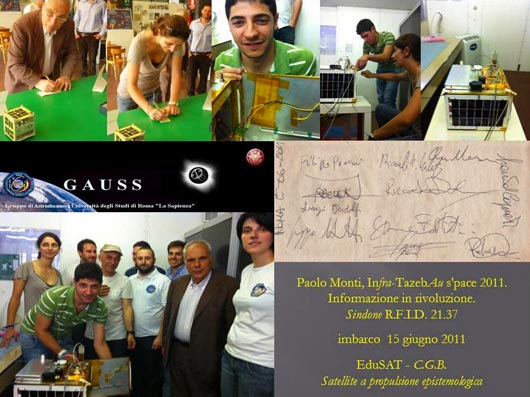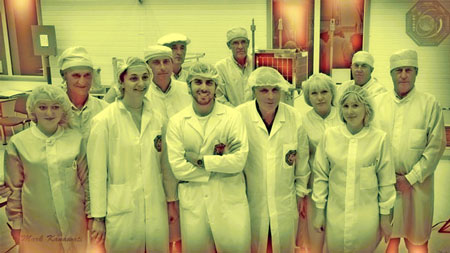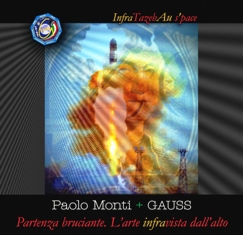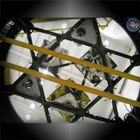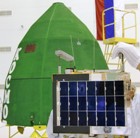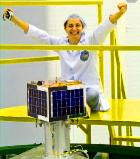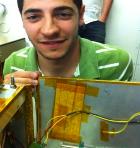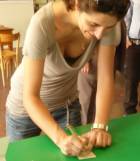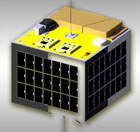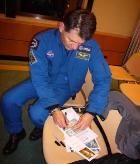|
|
|
|
The aim of the EduSat programme, financed and coordinated by the Agenzia Spaziale Italiana (A.S.I.), is to divulge scientific education in the field of spatial studies among students attending Senior High School and to support research and specialisation for university students, PhD doctorates and young researchers. It consists in a short mission into space in order to carry out scientific experiments and test new technologies while in outer-space, all achieved with a low cost philosophy.
The micro-satellite, constructed by students of the Group of Astrodynamics
of the “Sapienza” University of Rome (GAUSS), has a prism-like structure with a
square base of 315mm x 315mm x 260mm, weighing approximately 10kgs and will be
sent into a polar heliosincronic orbit at an altitude of 700km.
TazebAu s'pace, a meta-environmental opera of scientific-artistic and humanitarian nature in line with the EduSat programme, developed from a project in cooperation with GAUSS, founded by Prof. Filippo Graziani and coordinated by the aerospace engineer Chantal Cappelletti, researcher at the Space Science Center at the Morehead State University in Kentucky (USA), and Paolo Monti who, for years, has been undertaking a singular research poised at the very limit between Art, Science and Architecture, where the scope of Gregory Bateson’s systemic prospective is referenced in the plurality of the languages used.
Since 1996, together with Prof. Luigi Campanella, head of the
Multi-polar Museum of Scientific & Technological Information (M.U.S.I.S.),
Monti activated an interdisciplinary dialogue between Art and
Science, cooperating with research institutes such as CNR and
ENEA, which are often linked to numerous Contemporary Art
Exhibitions and editions of the Italian & European Week of Scientific
Culture.
Cooperation with G.A.U.S.S. took off in 2007 with a workshop held
at the Scuola di Ingegneria Aerospaziale (S.I.A.) of the Unversità di Roma ‘La Sapienza’, chaired by Prof. Filippo
Graziani, today Senior Sapienza Professor and member of the
Accademia Internazionale di Astronautica, This witnessed another
module being added to the opera TazebAu
which, in 2005, travelled along the Venice-Beijing route on board
the Marco Polo Motoraid in addition to Paolo Nespoli,
the man who caused arms to sprout, who joined forces in
2006.
TazebAu s'pace STS 120 Esperia Harmony,
realized with the contribution of the astronaut who, at ESRIN-Frascati, placed his signature followed by STS 120 with the
clear desire to associate himself with the Shuttle mission in which
he was involved. Conceived as a
travel-diary, TazebAu consists of
dollar bills that have been scraped bare - divested to a white blank - onto which signatures are to be
written as an act of reconversion of a nominal value into a relational value.
The
satellite is equipped with UHF and VHF band transceiver sets and an
S-band transmitter, which allows the satellite to be operated from
Earth through the ground station SPIV (San Pietro in Vincoli) which
is run by GAUSS. The
principal payload was suggested by the high school students involved
in the project and realised by IMT srl (Ingegneria Marketing
&Technolgia). It is a solar sensor that will help the students
understand the satellite’s set-up. The satellite also houses other
experiments carried out by the students at the GAUSS, in
collaboration with a variety of universities, research centres and
industries. In order to avoid the satellite becoming spatial debris
in accordance with IADC (Inter-Agency Debris Committee)
rules, the students at GAUSS have designed and implemented a
de-orbiting system for the satellite which will be tried out in
flight.
The first exposition of TazebAu
s’pace was held at the Museo di Chimica della Sapienza, in
collaboration with MUSIS, MIUR and the School of Aerospace
Engineering during the Italian Scientific Week of Culture in 2008
where the triptych video, TazebAu
s’pace 2008.
Information in revolution. C.G.B. an epistemologically propelled
satellite, with music by Alvin Curran (Music is
not Music – 7’37”) was presented. On
the 28th November 2011, as part of the European Scientific Week of
Culture, in collaboration with GUASS, MUSIS and the Bateson Circle
of Rome which is
dedicated to the epistemologist Gregory Bateson, Paolo Monti has
organised an in-depth exhibition-convention on the themes of the
mission. Congress CATH 2005 - Virtual Money: Data Visualisation and Financial Capitalism
www.lastampa.it | Edusat, un'intervista alla coordinatrice del progetto
|
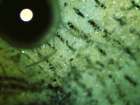
TazebAu
|
||
| ◄ |
